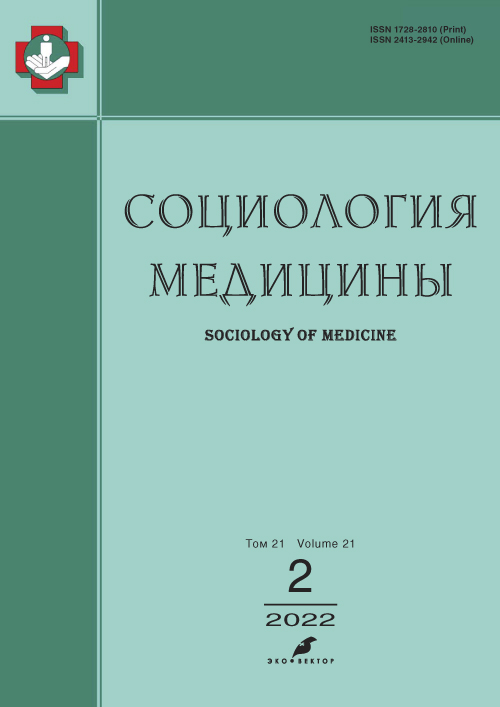Achievements and prospects for the application of artificial intelligence technologies in medicine. Overview. Part 2
- 作者: Berdutin V.A.1, Abaeva O.P.2, Romanova T.E.2, Romanov S.V.1
-
隶属关系:
- Volga District Medical Center
- Sechenov First Moscow State Medical University (Sechenov University)
- 期: 卷 21, 编号 2 (2022)
- 页面: 203-209
- 栏目: THE DIGITAL WORLD
- URL: https://rjsocmed.com/1728-2810/article/view/107908
- DOI: https://doi.org/10.17816/socm107908
- ID: 107908
如何引用文章
详细
On a global scale, a radical transformation of the healthcare sector is taking place right before our eyes. The last few years have become a turning point in terms of the number of new directions, the emergence of innovative diagnostic and treatment methods, and the introduction of digital platforms. Digital medicine uses information and communication technologies to address the numerous problems associated with ensuring the quality and accessibility of medical care already available today. The rapid development of neural networks and artificial intelligence (AI) provides doctors with ample opportunities to predict the course of diseases and calculate the risks to the health of patients. Manufacturers of medical devices offer consumer a wide range of software and products with AI embedded. Despite the tremendous advances in the application of AI in medicine, the medical community is highly concerned about some of the intractable problems associated with the too rapid and ubiquitous use of these digital platforms. A highly trained neural network is an extremely complex computer program consisting of a large number of internal hidden layers with customizable parameters. The more complex the neural network and the number of computational operations it performs, the more difficult it is to understand the processes in its inner layers. The functioning of AI systems in a black box format makes explaining the results of its work a very non-trivial task. Therefore, in the future, research will certainly be required assessing the reliability of these systems and interpreting their decision-making processes which, will affect the neural networks of the latest generations.
全文:
作者简介
Vitaly Berdutin
Volga District Medical Center
Email: vberdt@gmail.com
ORCID iD: 0000-0003-3211-0899
SPIN 代码: 8316-7111
Olga Abaeva
Sechenov First Moscow State Medical University (Sechenov University)
编辑信件的主要联系方式.
Email: abaevaop@inbox.ru
ORCID iD: 0000-0001-7403-7744
SPIN 代码: 5602-2435
MD, Dr. Sci. (Med.)
俄罗斯联邦, MoscowTatyana Romanova
Sechenov First Moscow State Medical University (Sechenov University)
Email: romanova_te@mail.ru
ORCID iD: 0000-0001-6328-079X
SPIN 代码: 4943-6121
MD, Cand. Sci. (Med.)
俄罗斯联邦, MoscowSergey Romanov
Volga District Medical Center
Email: pomcdpo@mail.ru
ORCID iD: 0000-0002-1815-5436
SPIN 代码: 9014-6344
MD, Dr. Sci. (Med.)
俄罗斯联邦, Nizhny Novgorod参考
- Kim H, Goo JM, Lee KH, et al. Preoperative CT-based Deep Learning Model for Predicting Disease-Free Survival in Patients with Lung Adenocarcinomas. Radiology. 2020;296(1):216–224. doi: 10.1148/radiol.2020192764
- Phillips M, Marsden H, Jaffe W, et al. Assessment of accuracy of an artificial intelligence algorithm to detect melanoma in images of skin lesions. JAMA Netw Open. 2019;2(10):e1913436. doi: 10.1001/jamanetworkopen.2019.13436
- Questions and Answers on FDA’s Adverse Event Reporting System (FAERS) [Internet]. FDA [cited 23 January 2023]. Available from: https://www.fda.gov/drugs/surveillance/questions-and-answers-fdas-adverse-event-reporting-system-faers
- Liu X, Faes L, Kale AU, et al. A comparison of deep learning performance against health-care professionals in detecting diseases from medical imaging: a systematic review and meta-analysis. Lancet Digital Health. 2019;1(6):e271–e297. doi: 10.1016/S2589-7500(19)30123-2
- Sabottke CF, Spieler BM. The effect of image resolution on deep learning in radiography. Radiol Artif Intell. 2020;2(1):e190015. doi: 10.1148/ryai.2019190015
- Heaven D. Why deep-learning AIs are so easy to fool. Nature. 2019;574(7777):163–166. doi: 10.1038/d41586-019-03013-5
- Habli I, Lawton T, Porter Z. Artificial intelligence in health care: accountability and safety. Bull World Health Organ. 2020;98(4):251–256. doi: 10.2471/BLT.19.237487
- Adamson AS, Smith A. Machine learning and health care disparities in dermatology. JAMA Dermatol. 2018;154(11):1247–1248. doi: 10.1001/jamadermatol.2018.2348
- Finlayson SG, Bowers JD, Ito J, et al. Adversarial attacks on medical machine learning. Science. 2019;363(6433):1287–1289. doi: 10.1126/science.aaw4399
- Zou J, Schiebinger L. AI can be sexist and racist — it’s time to make it fair. Nature. 2018;559(7714):324–326. doi: 10.1038/d41586-018-05707-8
- Kelly CJ, Karthikesalingam A, Suleyman M, et al. Key challenges for delivering clinical impact with artificial intelligence. BMC Med. 2019;17(1):195. doi: 10.1186/s12916-019-1426-2
- Nagendran M, Chen Y, Lovejoy CA, et al. Artificial intelligence versus clinicians: systematic review of design, reporting standards, and claims of deep learning studies. BMJ. 2020;368:m689. doi: 10.1136/bmj.m689
- Willitts-King B, Bryant J, Holloway K. The humanitarian «digital divide». HPG Working Paper. London; 2019. P. 15.
- Filippov YuN, Abaeva OP, Filippov AYu. Problems of compensation of moral harm related to rendering of medical assistance. Meditsinskoe pravo. 2014;1:21–24. (In Russ).
- Voss C, Schwartz J, Daniels J, et al. Effect of wearable digital intervention for improving socialization in children with autism spectrum disorder: a randomized clinical trial. JAMA Pediatr. 2019;173(5):446–454. doi: 10.1001/jamapediatrics.2019.0285
- He J, Baxter SL, Xu J, et al. The practical implementation of artificial intelligence technologies in medicine. Nat Med. 2019;25(1):30–36. doi: 10.1038/s41591-018-0307-0
- Reshetnikov AM. The social institution of medicine. Part I. Sociology of Medicine. 2018;17(1):4–11. (In Russ). doi: 10.18821/1728-2810-2018-17-1-4-11
- Reshetnikov AM. The social institution of medicine. Part II. Sociology of Medicine. 2018;17(1):68–79. (In Russ). doi: 10.18821/1728-2810-2018-17-2-68-79
补充文件






